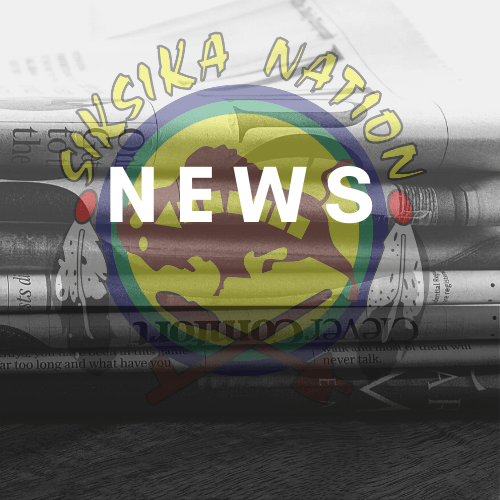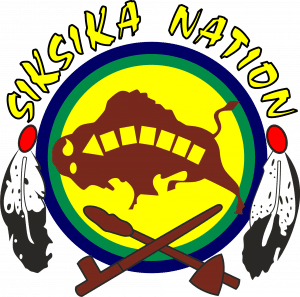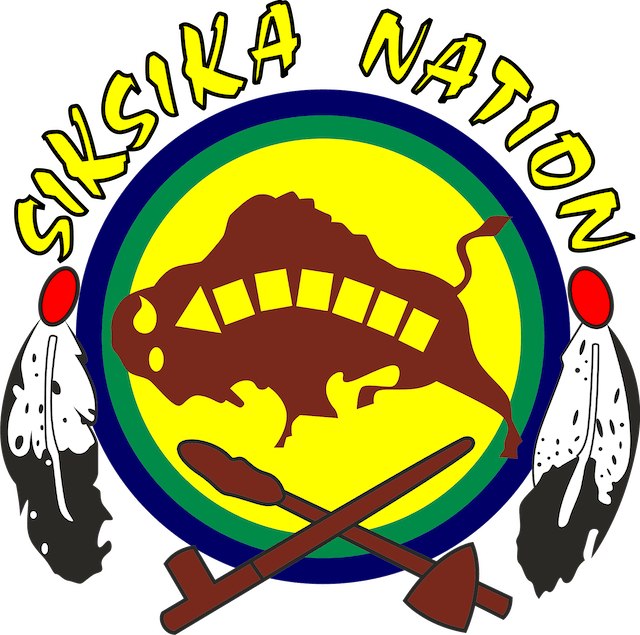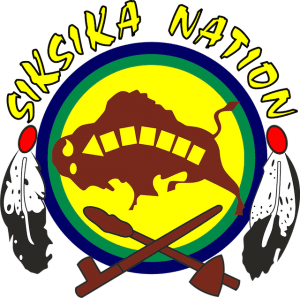

Office of Chief and Council
Government of Siksika Nation
P.O. Box 1100 Siksika, AB T0J 3W0 | (403) 734-5109 | Toll Free 1-800-551-5724 | www.siksikanation.com
FOR IMMEDIATE RELEASE
June 15, 2022
Castle Mountain Signage Unveiling
Siksika Nation will participate in a signage unveiling at Castle Mountain on June 17th, 2022 that will include the Siksika language. The unveiling will begin at 11:00 AM with a blessing and remarks from representatives from both Siksika and Parks Canada as well as the official unveiling of the new signs.
“The Blackfoot have been in this area since time immemorial. This statement is not simply a claim made by the Siksika, but one that is supported by evidence and proven as part of the Castle Mountain Claim. As part of the settlement agreement, Parks Canada agreed to provide interpretive signage telling the story of Miistukskoowa (Castle Mountain). The claim was settled in August of 2016, so these interpretive signs are long overdue. It’s time the people of Alberta learn the true history of our Province. A history that cannot be written without the Blackfoot. We played a critical role in the forming of this region and we will continue to have a vital impact of the future of Alberta and Canada.” stated Chief Ouray Crowfoot, Siksika Nation.
Miistukskoowa (Castle Mountain) is part of the Blackfoot (Siksika) territory. Siksika’wa hunted and harvested timber, medicinal, ceremonial, edible plants and roots, in the foothills and mountains area since time immemorial. These resources were used for sustenance, such as, for diet, medicinal and ceremonial uses.
Castle mountain is located near the number one highway and was a significant trade route that was part of Blackfoot territory. This was an important area for the Blackfoot Nation because of its location that includes two routes into the Rocky Mountains. The Blackfoot people harvested animals, medicinal and edible plants, red ochre, yellow ochre, and is considered a sacred place.
“The Blackfoot used this area as a favorite wintering camp because of the hot springs which was also a good area for harvesting lodgepole pines for their lodges. The area was used long before the treaty was signed.” Explained elder Scotty Many Guns.
A settlement between the Government of Canada and Siksika Nation was settled in 2016 that included a $123 million-dollar compensation for illegal use of land granted in the late 1880s. The dispute focuses around the Siksika claim to Castle Mountain in Banff National Park dating back to the 1880s, who argued it was wrongfully taken from them in 1908 without their consent and proper compensation. The lands at Castle Mountain, were added to the Rocky Mountain Park, now known as Banff National Park, in 1911.
“The unveiling of these signs will affirm Siksika Nation’s presence in Blackfoot territory since time immemorial. Informing visitors on the true history of the area that speak to Siksika Nation’s activities in Banff National Park” added Richard Sparvier, Tribal Manager.
For more information contact:
Siksika Nation Chief and Council Communications Specialist
Lynn Calf Robe
Email: lynncr@siksikanation.com
About Siksika Nation
Since time immemorial, the Children of the Plains, the Siksikai’tsitapi – Blackfoot People, have lived in and protected a territory that stretches from the North Saskatchewan River in present day Alberta and Saskatchewan to the Yellowstone River in the state of Montana, from the Continental Divide in the west to Regina in the province now known as Saskatchewan.
Today, Siksika Nation population is approximately 7800+ and is part of the Siksikaitsitapi – Blackfoot Confederacy. The Siksikaitsitapi refers to four Indigenous Nations which make up the Blackfoot people: the Siksika (Blackfoot), the Kainai (Many Chiefs), the Apatohsipiikani (Northern Peigan) and Amsskapipiikani (Southern Peigan). Siksikai’powahsini (Blackfoot Language) is the language of the Siksikaitsitapi.


